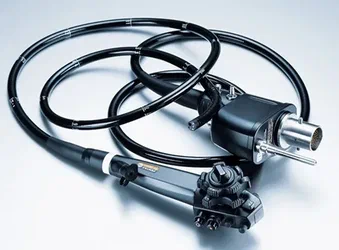Endoscopy Devices Market: Disruptive Innovations Shaping the Future of Medical Endoscopy

The endoscopy devices market has undergone tremendous transformation over the years, driven by a constant push for improving diagnostic accuracy, patient comfort, and clinical efficiency. Endoscopy, a critical diagnostic tool used to examine the internal organs of the body, has evolved beyond traditional scopes, incorporating cutting edge innovations that are reshaping the landscape of medical procedures. These disruptive innovations are not only improving the precision and effectiveness of endoscopic procedures but also making them more accessible, less invasive, and safer for patients.
Evolution of Endoscopy Technology
Endoscopy, once considered a procedure reserved for only the most serious of cases, has become an integral part of modern healthcare. Initially, endoscopes were rigid, bulky, and limited in their scope of use. They provided only basic visualization, often requiring patients to undergo general anesthesia or suffer from discomfort during and after the procedure. However, with the advent of digital imaging, flexible fiber optics, and high-definition cameras, endoscopy procedures have become far more sophisticated, offering clearer and more accurate images with less patient discomfort.
Today, medical professionals are benefiting from a variety of endoscopic procedures that allow for minimally invasive exploration of various body cavities. These technologies are crucial in the diagnosis and treatment of diseases in areas like the gastrointestinal tract, respiratory system, urology, and even the brain. As the market for endoscopy devices continues to expand, new innovations are pushing the boundaries of what is possible, making the future of medical endoscopy both exciting and transformative.
Disruptive Innovations in Endoscopy
Several disruptive innovations are fundamentally changing the endoscopy devices market, particularly in terms of how endoscopic procedures are performed, how they interact with patients, and how they provide actionable diagnostic data.
1. Robotics-Assisted Endoscopy
One of the most significant innovations in endoscopy has been the integration of robotics into the procedure. Robotics-assisted endoscopy systems, such as robotic surgical systems, allow for greater precision and control during procedures. These systems use advanced robotics to enhance the maneuverability of endoscopes, enabling healthcare providers to navigate delicate areas within the body with more accuracy than traditional methods. This minimizes the risk of complications and improves the overall success rate of procedures.
Robotics-assisted endoscopes offer a level of dexterity and flexibility that human hands alone cannot achieve, allowing surgeons to access hard-to-reach areas with minimal invasiveness. These systems can be especially beneficial in complex surgeries where precision is critical, such as in the removal of tumors or in delicate procedures involving the respiratory system or the brain.
2. Artificial Intelligence (AI) and Machine Learning
Artificial intelligence (AI) and machine learning (ML) are revolutionizing how endoscopic procedures are carried out. AI-enabled endoscopy devices are able to analyze images in real time, flagging potential abnormalities for the medical professional performing the procedure. This can significantly reduce the risk of human error and ensure that no potential issues are missed during the procedure. For instance, AI systems can help detect early signs of cancer or precancerous lesions that might otherwise go unnoticed, allowing for earlier intervention and better patient outcomes.
3. Capsule Endoscopy
Another innovative advancement is capsule endoscopy, a non-invasive diagnostic technique that allows doctors to visually inspect the gastrointestinal tract without the need for traditional endoscopic equipment. The patient swallows a small, pill-sized capsule that contains a camera, light source, and wireless transmitter. As the capsule travels through the digestive tract, it captures high-resolution images that are transmitted to an external device worn by the patient. This technology is particularly useful for examining parts of the GI tract that are difficult to reach with traditional endoscopy, such as the small intestine.
Capsule endoscopy is a prime example of how disruptive innovations are making medical procedures more patient-friendly, with no need for sedation, minimal discomfort, and a reduced risk of complications. This technology is becoming increasingly popular for routine screenings, offering both patients and clinicians an easier, more convenient option for early diagnosis and monitoring of gastrointestinal conditions.
4. Single-Use Endoscopes
Single-use or disposable endoscopes represent another major innovation in the endoscopy devices market. Traditional endoscopes, which are often expensive and require reprocessing between uses, present challenges in terms of infection control, maintenance, and cost. Single-use endoscopes eliminate these concerns by offering a sterile, ready-to-use device that is disposed of after each use. These devices help reduce the risk of cross-contamination and infections, which are common concerns in clinical settings, especially for patients undergoing procedures that involve the upper and lower gastrointestinal systems.
The rise of single-use endoscopes is also contributing to cost-effectiveness, particularly for healthcare facilities in regions where resources are limited. These devices offer an affordable alternative to reusable scopes, eliminating the need for costly sterilization processes and reducing overall maintenance costs.
5. Augmented Reality (AR) and Virtual Reality (VR) in Endoscopy
Augmented reality (AR) and virtual reality (VR) are also making their way into the endoscopy field. These technologies enhance the visualization of internal organs during procedures by superimposing digital images onto the real-world view of the patient’s anatomy. AR can provide valuable real-time guidance to surgeons, displaying critical information, such as the location of tumors or blood vessels, directly on the operating field. This reduces the risk of errors and improves the precision of interventions..
Market Innovations and the Future of Endoscopy
The future of the endoscopy devices market is poised for significant transformation as these innovations continue to evolve. Technologies like robotics, AI, capsule endoscopy, single-use devices, and AR/VR are set to enhance the precision, safety, and accessibility of endoscopic procedures. The continued integration of these innovations will make endoscopy a more powerful tool for diagnosing and treating a wide array of conditions, from routine check-ups to life-saving surgeries.
- Art
- Causes
- Crafts
- Dance
- Drinks
- Film
- Fitness
- Food
- Games
- Gardening
- Health
- Home
- Literature
- Music
- Networking
- Other
- Party
- Religion
- Shopping
- Sports
- Theater
- Wellness


